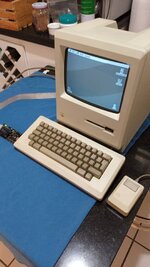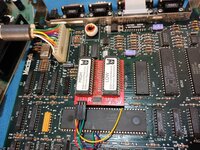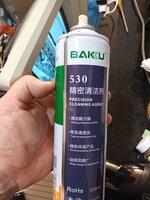Hi there to everyone!
This would be my first post on any internet site! (That tells something about my age for sure!)
I am writing to you from afar as a newcomer seeking help with a recently acquired Macintosh 512K. Please excuse any grammatical errors, as English is not my native language. I find the use of Google Bard/Genie to rephrase my writing quite interesting, don't you think?
I am facing error codes 0F0002 and 0F0003, but with an unusual twist:
If I turn on the machine after it has been off for a few hours, it actually boots up! However, within a minute or so, System 6 crashes with "Illegal address/instruction" errors.
I would be deeply grateful for any guidance anyone can offer in troubleshooting this issue. I am eager to learn more about my Macintosh and bring it back to full functionality.
I have already tried the following:
Regards,
Builder 68
This would be my first post on any internet site! (That tells something about my age for sure!)
I am writing to you from afar as a newcomer seeking help with a recently acquired Macintosh 512K. Please excuse any grammatical errors, as English is not my native language. I find the use of Google Bard/Genie to rephrase my writing quite interesting, don't you think?
I am facing error codes 0F0002 and 0F0003, but with an unusual twist:
If I turn on the machine after it has been off for a few hours, it actually boots up! However, within a minute or so, System 6 crashes with "Illegal address/instruction" errors.
I would be deeply grateful for any guidance anyone can offer in troubleshooting this issue. I am eager to learn more about my Macintosh and bring it back to full functionality.
I have already tried the following:
- Reseating the original ROM chips
- Adjust Voltage (Originally reads 5.42V and 13.63V. Now is 5.1V and 12.47V)
- Resold joints of J1 & J4 connector
- Installing and booting from ROM-INNATOR OS (Ctrl+R)
- Booting from floppy disks
- Booting from a floppy emulator
Regards,
Builder 68






